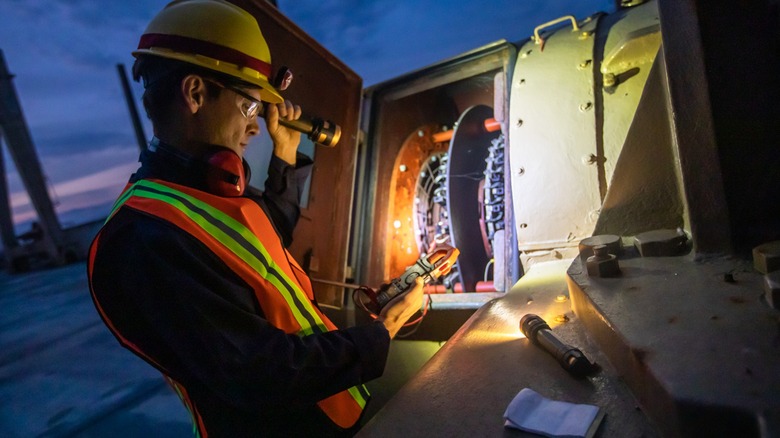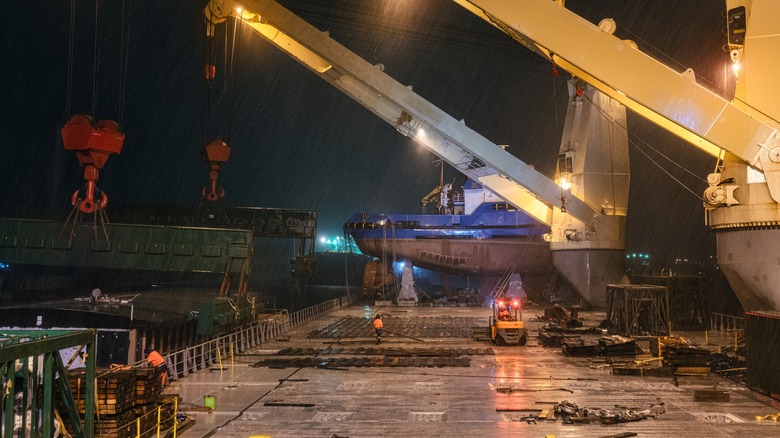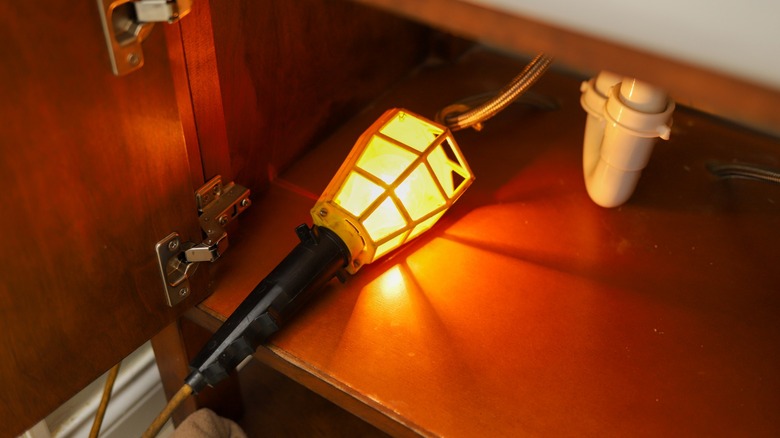How To Choose The Best Makita Lights For Your Next Job Site
There are some things that a smartphone can't replace. That built-in flashlight, for example, doesn't hold a candle (pun intended) to the industrial-grade work lights needed for construction sites. There are quite a few applications where workers can't simply break out of their pocket-sized phone light and hope it will efficiently light their way. When it comes to the work site, you can't fumble around in the dark or work with insufficient lighting, so it's crucial to know how to choose the best lighting option.
Makita, a well-known brand for power tools, is also no stranger to different lighting solutions, with options that range from stationary work lights to compact flashlights. To properly light your space using one of Makita's premium lights, you need to consider several factors that will ultimately determine the type of light source that works best for your daily needs. To help you navigate the different available options, we've put together this breakdown of things you need to consider when in the market for job site lighting. We'll explore many facets of potential work sites to touch on important elements that can influence your decision.
How Much Light Do You Need?
There are a few factors that dictate how much light your job site needs. Of course, for safety's sake, the goal is to illuminate every inch of working space properly. When choosing a light intensity, you need to consider the OSHA standards, which outline what's required at specific site types, such as a construction zone or warehouse, to be at least three and five foot-candles.
Whereas a lumen measures the amount of light produced, a foot-candle depicts the relationship between distance and lumens. Essentially, the relationship breaks down to the greater the surface area, the higher the number of lumens needed for complete illumination. Since commercial lights aren't measured in foot-candles, though, the simplest way to think of this is a foot-candle equaling one lumen per square foot. Based on this, if you're working in a 1,000-square-foot space, you need at least 1,000 lumens. Keeping all of that in mind, it's important to note that it's incredibly rare for a workspace to be a large, open blank canvas. There will typically always be something casting a shadow, so while the broader space may benefit from one of Makita's larger area lights, there may be nooks where something like Makita's 18V LXT Cordless Tower Work Light or a plug-in hanging light, would work best.
Is Water Resistance a Necessity?
Though many work lights can be used both inside and out, you still have to consider the environment you're working in. Construction sites, especially in moist and tropical climates, are more prone to rain and, therefore, require water-resistant lighting. It's not enough to just look to see if a light is water resistant either, though. You need to pay attention to what's called the IP rating. The IP, or Ingress Protection, rating of any electronic device is the level of protection against external elements like water and dust. There are two numbers associated with an IP rating, the first representing the level of protection against solid foreign objects and the second indicating the level of water resistance.
When working in wetter environments, you'll want to look at lighting where the second number of the IP rating is higher. For example, Makita's Outdoor Adventure 18V LXT light boasts an IP rating of IP65. Per the International Electrotechnical Commission, that light would be protected against water jets and, therefore, should be fine in rainy environments. Additionally, the "6" in IP65 references its protection against solids and is the highest rating possible, meaning it's dust-tight.
Are You Limited on Space?
Space is going to be another factor to think about when choosing your new outdoor Makita light. When you think of a job site, you may picture road work and home construction. They're larger open spaces that allow for bulkier lights, like the 18V X2 LXT. However, not everyone has the benefit of working in spacious conditions.
Underground job sites or even sites with stairs will need a unique setup, such as string lights or Makita's 18V LXT Cordless Lantern. When navigating tight spaces or sharp corners, it can be more difficult to set up a stationary light, so a flashlight or headlamp may be the only viable means of illuminating the space ahead of you. The 18V LXT Cordless Flashlight is a versatile option for cramped quarters. If you need both hands, you can use the built-in hanger to mount it. Job sites with limited space may also be limited in potential power supplies. Thankfully, all of Makita's work lights can be cordless; while on the job, you'll want a few charged batteries for the larger work lights with multiple power settings, but the lantern and flashlight boast around a 12- and 17-hour battery life respectively.



